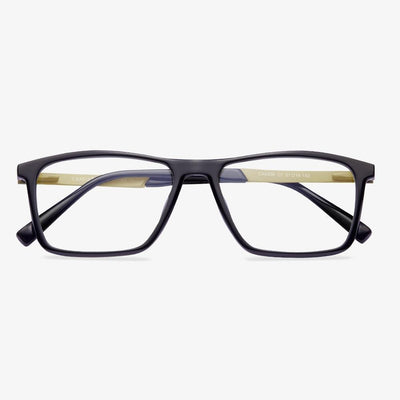What is the progressive multifocal lens?
The lens of progressive multifocal glasses can change the refraction of the lens at the upper part of the central channel of the line of sight, which can effectively solve the difference of refraction when people view objects at different distances from long, medium, and short distances. Depending on demand, people have the flexibility to change or compensate vision according to visual distance, making it easier to help to adjust your vision in a variety of situations.
What are the causes of lens damage?
When the force area of the lens is small, the impact resistance of the lens is worse. When subjected to the impact of external forces, the lens will naturally be squeezed and cause breakage.
In particular, some lenses with low degrees and high refractive index are possible to cause this phenomenon. When the frame fell from a height due to wrong placement, there is a collision between the edge of the lens and the ground or hard objects. It will produce a broken or collapsed edge. In the process of the lens falling from high, the impact force is larger, and the stress point is smaller. When the glasses are falling, the upper edge of the lens, the convex groove of the upper frame, squeezes against the lens. The middle part of the upper half is easy to cause edge collapse. In the process of processing the template, the template is not accurate, so that the glasses side and the frame can not be uniform fusion, and the force of the lens is uneven. It will be easy to lead to greater stress in some parts, resulting in edge collapse.
How to test a blue-light lens?
Blue-light-blocking lenses are now focused on refractive indices of 1.56 and 1.60. If you buy lenses that are not of either refractive index, be wary. Of course, with the development of technology, now some brands have produced 1.71 refractive indexes blue-light-blocking lenses, suitable for people with high myopia to wear. The true lens package should at least have the product name, refractive index, dispersion coefficient, transmittance, color, SPH, CYL, and other indicators. These indicators are perfect, can be treated as the reference basis of the formal product. In addition, you can go to a professional optical shop or testing institutions for testing.
What glasses make you look younger?
Oversized frames
These are great glasses for older people because they help you hide facial features that reveal your age. This type of frame will draw attention to your beautiful eyes, rather than the under-eye puffiness and wrinkles under them. In addition, oversized frames have been a trend in the past few years. Fortunately, oversized glasses come in a variety of shapes. If you have a round face, choose a square frame or a passing frame. If you have a chiseled chin and an angular face, such as a square or diamond, you can opt for oversized glasses that are round. When choosing a color, make sure it matches your hair color.
Semi-rimless glasse look more stylish.
Semi-rimless glasses are very stylish and more creative than rimmed glasses. Women looking for the perfect glasses will look more elegant and stylish in these glasses. The semi-rimless glasses are designed to make the wearer look the smartest. They are much better than rimmed glasses because they make you look more creative.
Why do you need low bridge glasses?
The glasses always slide in front of the nose. No one wants to keep putting their glasses back in place, especially in a conversation. Your glasses will slide down your nose, in other words, they won't sit on the bridge of your nose, and the frames will hit your cheeks, which may give you a cheek rash. The glasses move when you smile or laugh. The lenses rub against your eyes/eyelashes.
What Are Bifocal Glasses?
Vision changes seem to be related to age. Presbyopia occurs in the middle age of one person, affecting your eye’s ability to focus. But it can be caused by bifocal glasses.
Bifocal glasses are divided into two parts to accommodate two different prescriptions in one lens. One area of the lens will have one prescription (usually distance) and a segment in the lower half will have the other (usually near vision).
Bifocal glasses were invented by Benjamin Franklin, who solved his own vision problem by taking the lens from his reading glasses and distance glasses and cutting them in half. Then remade the cut lenses into a single pair of bifocals and put the distance lens on top and the reading lens on the bottom.
However, the bifocal glasses come with some problems. So, in the following section, we will show you some common bifocal glasses problems.


















































